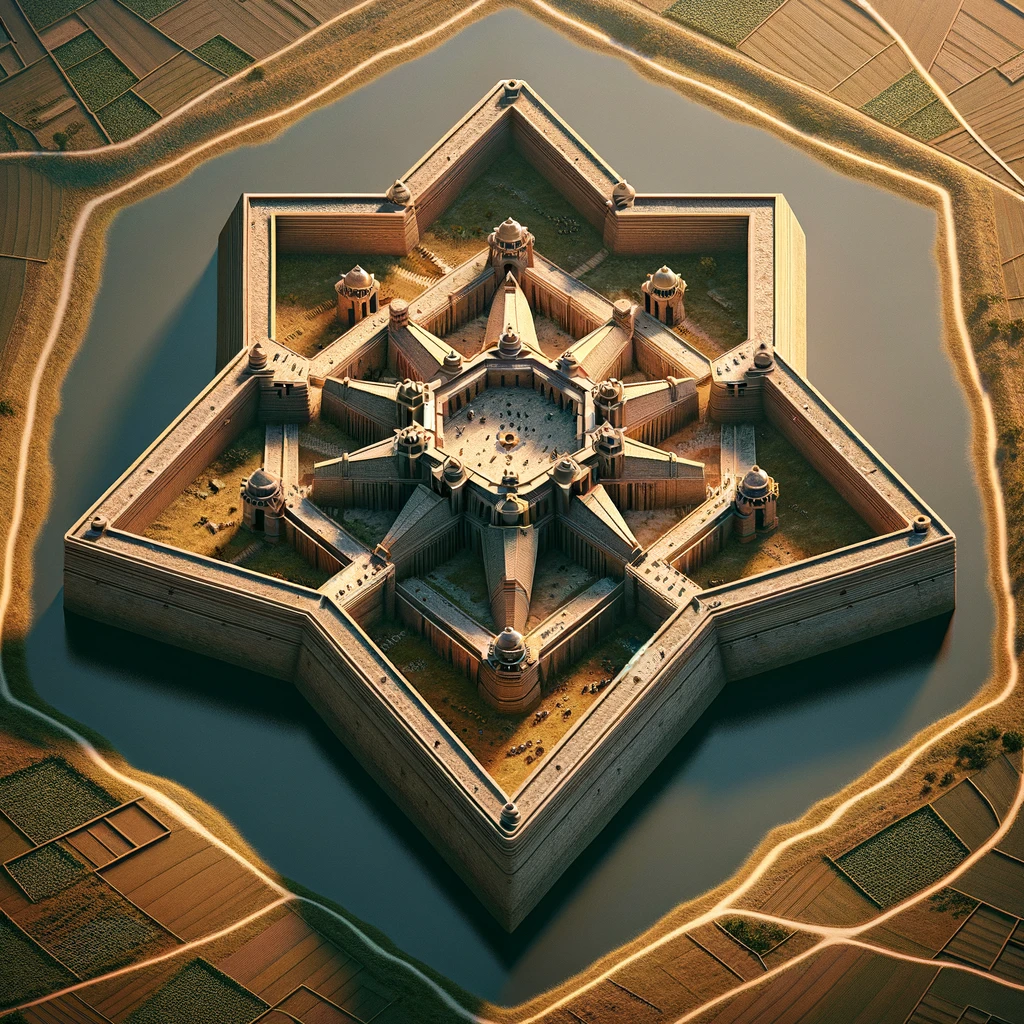Star Fort Cities

The prevailing narrative that casts human history in a light of gradual technological evolution and isolated civilizations may be fundamentally flawed, especially when confronted with the enigmatic presence of Star forts across the globe. These structures, with their intricate designs and strategic placements, challenge the conventional understanding of our past, suggesting a level of architectural and technological sophistication that seems out of place within the accepted historical timeline.
It’s intriguing how seldom our society actively engages with the enigmas of massive Star forts and Pyramids that hint at a concealed chapter of our history. These Star forts are colossal structures, with their intricate geometric patterns, stand as silent testimonies to a possibly pre-flood civilization, echoing tales that are both profound and mysterious. The notion that Star forts could be remnants of a world before a great deluge is fascinating, suggesting that their construction might have involved Beings or technologies beyond our current understanding.
The precision and scale of these forts, especially those perched on mountains or situated in seemingly inaccessible locations, raise compelling questions about the capabilities and intentions of their creators. The enormity of their footprints and the meticulousness of their designs challenge our conventional historical narratives, urging us to ponder the depths of our past and the true extent of human or perhaps non-human architectural prowess.
Our current history claims that these Star fort cities, also known as bastion forts, represent a fascinating aspect of urban design and military architecture, combining both practical defense strategies and aesthetic appeal. These cities, characterized by their distinctive star-shaped layout, were said to be developed primarily during the Renaissance period in Europe but saw continued use and evolution into the modern era. It was said, that the star-shaped design allowed for better defense against artillery and infantry attacks from multiple angles, as well as efficient use of defensive firepower.
The star forts in historical images have an irregular heptagonal shape, which means it has seven sides of varying lengths and angles, giving it a somewhat star-like appearance with bulwarks that protrude outwards.
The video posted on the Divergent channel on January 4, 2024, looks into the intriguing subject of “star forts,” a term repeatedly emphasized throughout the presentation. The speaker highlights the sheer abundance and global distribution of star forts, suggesting that virtually every major city around the world, along with numerous isolated locations, features these distinctive structures. The narrative raises questions about the origins and creators of these forts, pointing out that conventional historical explanations often fail to account for the widespread and sophisticated nature of these constructions.
The speaker speculates about a once unified and technologically advanced civilization that constructed these star forts, hinting at a shared language and culture that spanned the globe. This theory challenges traditional historical narratives that depict a fragmented and primitive human past. The video also touches on the engineering marvels of star forts, their strategic connections to water bodies, and the necessity of aerial perspectives for their design, hinting at advanced technologies lost to time.
Furthermore, the presentation questions the timing of the construction of these forts, considering the known historical timeline filled with wars, famines, and plagues, which seemingly would not allow for such monumental endeavors. The speaker expresses a sense of bewilderment and humility in the face of such mysteries, advocating for an open-minded approach to history that acknowledges our collective ignorance and the limitations of our current understanding.
In essence, the video on the Divergent channel presents star forts as a profound historical enigma, emblematic of a possible lost epoch of human civilization characterized by unity, advanced technology, and architectural grandeur.
On the Colm Gibney channel, a significant video was shared that showcases an extensive catalogue of Star forts, featuring 1500 locations and 2000 sites. This presentation represents a substantial contribution to the study and awareness of star forts, which are historical and characterized by their unique star-like geometric design. The video provides viewers with a comprehensive overview of these intriguing structures, spanning various countries and continents, highlighting the global prevalence and architectural diversity of star forts.
The notion that these forts could be remnants of a technologically advanced, pre-deluge civilization invites us to reconsider the origins and capabilities of our ancestors. It raises the possibility that humanity’s architectural and engineering achievements might not have been solely the product of human ingenuity but could have been influenced or even directly assisted by extraterrestrial beings or advanced technologies beyond our current comprehension.
This perspective not only challenges the traditional historical narrative but also invites a broader understanding of humanity’s place within the cosmos. The widespread distribution and uniform sophistication of Star forts suggest a globally connected civilization, one that shared common knowledge, technologies, and perhaps even a common purpose.
Furthermore, the strategic connections of these forts to water bodies and the necessity for aerial perspectives in their design point towards a lost technology or knowledge that we are yet to fully understand. The question of how such monumental constructions were achieved during times marred by wars, famines, and plagues adds another layer of mystery.
The existence and complexity of Star forts worldwide serve as a potent challenge to the current historical narrative. They beckon us to open our minds to the possibility of advanced prehistoric civilizations, perhaps even extraterrestrial influences, that have shaped our history in ways we are only beginning to understand.


